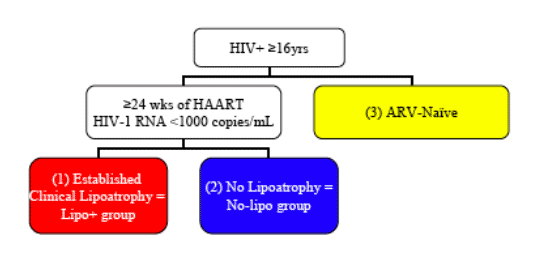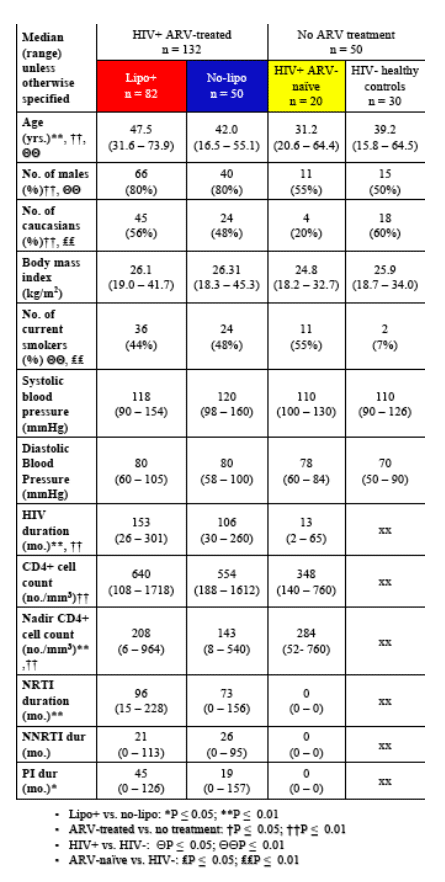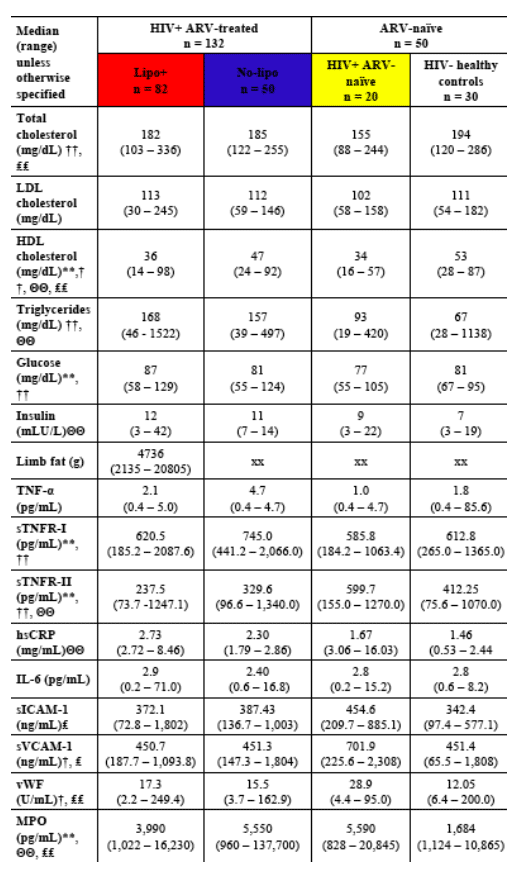| |
Endothelial Activation Markers Are Linked to HIV Status and Are Independent of ART and Lipoatrophy
|
| |
| |
Reported by Jules Levin
15th CROI, Feb 2008, Boston
Allison C. Ross, MD1,3, Rachel Armentrout3, Mary Ann O'Riordan1,3,MS, Norma Storer, RN1,3, Nesrine Rizk2,3, MD,
Danielle Harrill1,3, Dalia El Bejjani,MD2,3, and Grace A. McComsey, MD1,3
1Rainbow Babies and Children's Hospital, 2University Hospitals Case Medical Center,
3Case Western Reserve University, Cleveland, OH
AUTHOR CONCLUSIONS
· Enhanced endothelial activation occur in ARV-naive, while HIV+ on ARV with HIV-1 RNA <1,000 cps/mL have similar values than HIV- of similar age
· The inflammatory marker sTNFRII is higher in HIV+ subjects when compared to matched healthy controls, and higher in ARV-naive when compared to ARV-treated subjects
· The inflammatory marker sTNFRII correlated with all endothelial markers and with the cardiovascular marker, MPO, suggestion an association between heightened inflammation and endothelial activation in HIV-infected subjects
· Lipoatrophy status did not influence endothelial biomarker levels
BACKGROUND
HIV infection carries an increased risk of cardiovascular disease. Isolated lipoatrophy appears to increase this CVD risk even further. Endothelial dysfunction and chronic inflammation have been separately reported in HIV+ subjects. It is unclear if lipoatrophy is independently associated with increased
endothelial dysfunction and higher systemic inflammation.
OBJECTIVES
· To assess inflammatory and endothelial activation biomarkers in HIV+ pts with and without lipoatrophy and in HIV- controls
· To correlate inflammatory and endothelial activation biomarkers to HIV characteristics, metabolic parameters, and the presence of lipoatrophy
METHODS
Study design
· Prospective, single-site, observational cohort study of HIV+ pts and age- and sex-matched uninfected healthy controls
· Eligible HIV+ patients divided into 3 groups:

Exclusion Criteria
· Known cardiovascular disease, diabetes, or current opportunistic infection or other acute inflammatory condition
Study Evaluations
· PE, BP, ht/wt, hip-to-waist ratio, past medical history
· Blood sampling after ≥ 8 hours fasting
- Lipoprotein profile, glucose, insulin
- Inflammatory markers:
* Tumor necrosis factor-_ (TNF- Α)
* Soluble tumor necrosis factor receptors I & II (sTNFRI, II)
* Interleukin-6 (IL-6)
* High sensitivity C-reactive protein (hsCRP)
- Endothelial activation markers:
* vonWillebrand's factor (vWF)
* Soluble intercellular adhesion molecule-1 (sICAM-1)
* Soluble vascular cell adhesion molecule-1 (sVCAM-1)
- Established cardiovascular marker:
* Myeloperoxidase (MPO)
Data analysis
· Group comparison done using distributionally appropriate two-sample tests
· Correlations done using Spearman correlation coefficients
Patient Characteristics
[[Median (Range)] Unless Stated Otherwise

RESULTS
Fasting Metabolic Parameters and Biomarkers [[Median (Range)]

Significant Correlations Among Biomarkers and Limb Fat
In ARV-treated group:
· sTNFRII positively correlated with the endothelial markers, sICAM-1 (R = 0.24, P = 0.006), sVCAM-1 (R = 0.74, P < 0.001), and vWF (R = 0.21, P = 0.018), and with the cardiovascular marker, MPO (R = 0.64, P < 0.001)
· sTNFRI positively correlated with the other inflammatory markers, sTNFRII (R = 0.28; P = 0.001) and IL-6 (R = 0.23, P = 0.008); IL-6 positively correlated with hsCRP (R =0.50, P < 0.001) In ARV-naive group:
· sVCAM-1 positively correlated with the inflammatory markers, sTNFRII (R = 0.51, P = 0.026) and IL-6 (R = 0.50, P = 0.028), and with the cardiovascular marker, MPO (R = 0.76, P = < 0.001)
· IL-6 positively correlated with the other inflammatory marker, hsCRP (R = 0.46, P < 0.001), and with the cardiovascular marker, MPO (R = 0.48; P = 0.04)
In the lipoatrophy group:
· Limb fat positively correlated with hsCRP (R = 0.29, P = 0.009) and IL-6 (R = 0.3, P = 0.007) but not with any of the endothelial markers
|
|
| |
| |
|
|
|